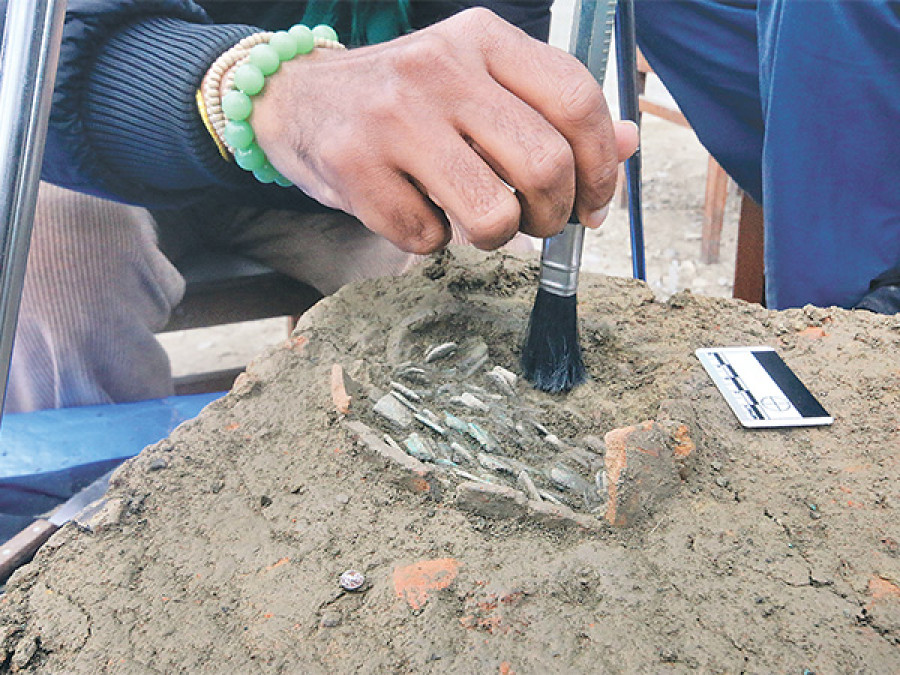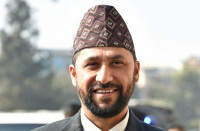National
494 old coins found in Buddha’s city
Counting of ancient silver coins recovered from Tilaurakot, the Shakya Capital city where Siddhartha Gautam spent 29 years of his princely life before he became the Buddha
Manoj Poudel
A team of archaeologists counted 494 ancient “punch mark” coins found in an earthen pot during the excavation on Sunday.
“It took us three days to count all the silver coins since the work should be done very carefully in order to avoid any damages to the coins,” said Ram Bahadur Kunwar, an archaeologist with the Department of Archaeology (DoA). The coins believed to have been used during 800-200 BC are square and circular in shape.
The excavation team comprising consultants, experts and archaeologists from Unesco, the DoA, Lumbini Development Trust and Durham University in the UK, who are part of the excavation project being carried out since January 8, recovered the coins. After digging about 1 metre under the surface of the soil, the team discovered the earthen pots containing the coins which are of 50 cm in height and 15 cm in diameter. There were 491 coins inside the pots while three others were found scattered outside it.
“This major discovery is likely to help archaeologists determine the history of Tilaurakot, the ancient city that attracts global interest,” said Kosh Prasad Acharya, an archaeologist and consultant for Unesco. “We will be able to share more details after conducting further research on the coins.”
Last year, while conducting a geo-physical survey of the area, the team had discovered the remains of an ancient Bihar, a religious and historical site related to Buddhism in the same area where the silver coins were found on Sunday. The project, expected to last two months, is initiated by Unesco and funded by the Japanese government in partnership with the Nepal government, along with Durham and Stirling universities and Global Exploration Fund under the National Geographic Society.
Tilaurakot had caught the attention of archaeologists after a recent geological survey conducted here substantiated that there might be the remains of an ancient city underneath, prompting the archaeologists to start excavation from four sites.




 10.12°C Kathmandu
10.12°C Kathmandu













%20(1).jpg&w=300&height=200)

